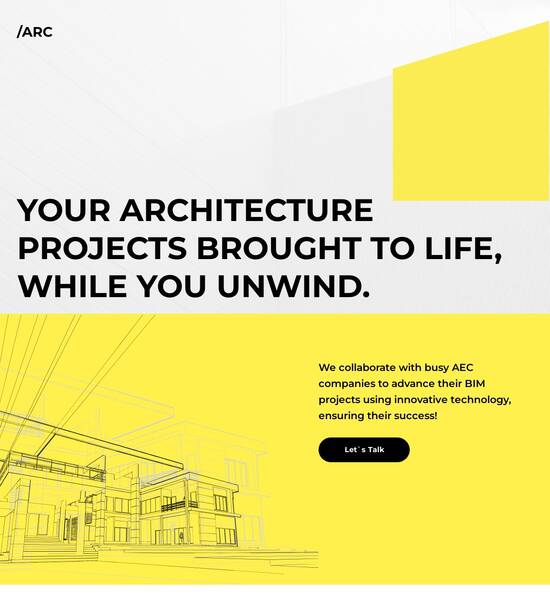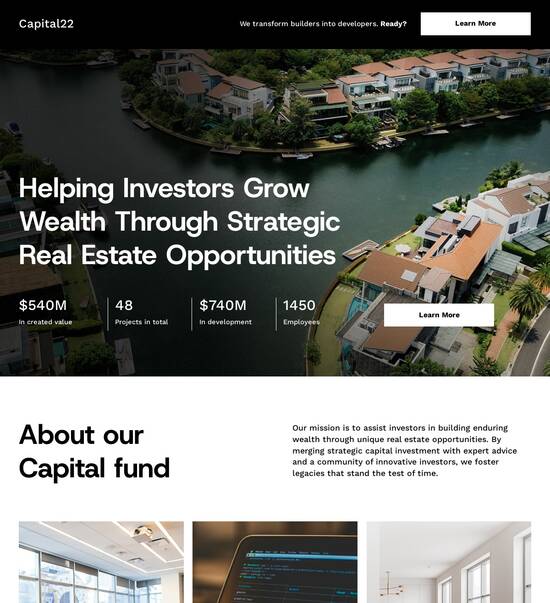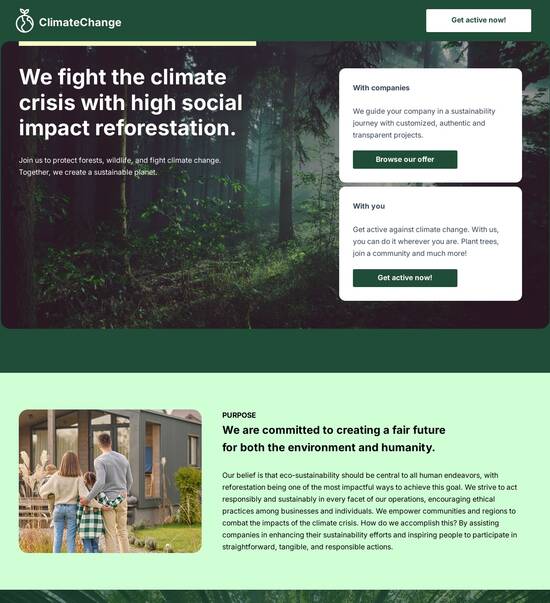
Blog page template optimized for Windows laptop
Explore Similar TemplatesAbout template
Accommodate to your audience with a specific blog page template optimized for Windows laptop. Get closer to your market with digital tools by Instapage.
Recommended templates

Easy to build without coding
With the intuitive drag-and-drop builder, anyone on your team can create high-converting pages without any knowledge of code or design. Make enhancements to your landing page with custom widgets using Javascript, HTML/CSS, or third-party scripts.

Multiple layouts for any industry and goal
Select from 500+ landing page layouts built to boost conversions across industry-specific scenarios. Customize them by adjusting fonts, adding images, and generating on-brand content with the AI assistant. Quickly scale with Instablocks® and Global Blocks that you can save, reuse, and update globally.

Loads fast and looks polished on any device
Every template is responsive, which means they present professionally on any device and load blazingly fast with our Thor Render Engine. You can also power them up with Google AMP technology to deliver an unparalleled mobile experience and drive higher conversions.

Robust analytics & experimentation
Get real-time updates and reporting across all your devices, showing the number of visitors, conversions, cost-per-visitor, and cost-per-lead. Launch AI-powered experiments, run A/B tests, and use heatmaps to analyze user behavior, then optimize your landing page to maximize conversions.







Easy to build without coding
With the intuitive drag-and-drop builder, anyone on your team can create high-converting pages without any knowledge of code or design. Make enhancements to your landing page with custom widgets using Javascript, HTML/CSS, or third-party scripts.
Multiple layouts for any industry and goal
Select from 500+ landing page layouts built to boost conversions across industry-specific scenarios. Customize them by adjusting fonts, adding images, and generating on-brand content with the AI assistant. Quickly scale with Instablocks® and Global Blocks that you can save, reuse, and update globally.
Loads fast and looks polished on any device
Every template is responsive, which means they present professionally on any device and load blazingly fast with our Thor Render Engine.
Robust analytics & experimentation
Get real-time updates and reporting across all your devices, showing the number of visitors, conversions, cost-per-visitor, and cost-per-lead. Launch AI-powered experiments, run A/B tests, and use heatmaps to analyze user behavior, then optimize your landing page to maximize conversions.
All the features you need to build lead-generating landing pages
Explore more featuresLearn how to build top-performing landing pages for any goal
FAQs
Leading the way in building high-performing landing pages





An all-in-one landing page and CRO platform optimized for marketers
Instapage empowers marketers to optimize their campaigns and enhance ROI through powerful, flexible solutions. With the unique combination of high-converting landing page templates and advanced optimization tools, Instapage caters to various sectors, offering tailored strategies that resonate with audiences in the U.S.
Why choose Instapage for landing page creation?
Instapage provides a comprehensive suite of features that streamline the landing page creation process. Designed for marketers from various industries such as Tech, Education, and Financial Services, the platform allows users to harness the benefits of effective landing pages without the need for coding expertise. Key features include:
- Over 100 high-converting templates: Save time and boost conversions with professional designs that require minimal customization.
- Advanced A/B testing capability: Use experimentation to pinpoint what resonates most with your audience, allowing for data-driven decisions.
- Real-time collaboration tools: Enhance workflow efficiency by enabling team members to collaborate seamlessly, fostering communication and feedback.
Getting started with Instapage
To leverage Instapage effectively, follow these initial steps:
- Create an account: Sign up on Instapage to access its features and create your first landing page.
- Choose a template: Select from the library of professionally designed templates that align with your campaign goals.
- Customize your page: Use intuitive tools to modify text, images, and calls to action to fit your audience's needs.
Optimizing your landing pages for higher conversions
Once your landing page is set up, consider implementing these optimization strategies:
- Utilize heatmaps: Analyze user behavior on your page to identify areas for improvement.
- Implement dynamic text replacement: Tailor page content to match the ads that led users there for a personalized experience.
- Monitor performance metrics: Regularly check analytics to assess the effectiveness of your landing pages and adapt as necessary.
With these actionable steps, marketers can maximize the effectiveness of their landing pages, driving engagement and conversions.
Instapage stands out as the go-to solution for creating compelling landing pages designed to convert. Whether you’re a small business or a large enterprise, tools are at your disposal to ensure your digital marketing strategy achieves remarkable results.
Start maximizing your marketing ROI today by harnessing the power of Instapage’s landing page and CRO platform.
People also ask about Blog page template optimized for Windows laptop
Crafting the perfect blog page template for Windows laptops
Understanding the purpose of a blog page template
Blog page templates are pre-designed layouts that provide structure, style, and functionality to a blog. These templates are critical for bloggers as they streamline the content creation process, allowing writers to focus on their message rather than the technical aspects of design. A well-thought-out template ensures that users have a consistent and engaging experience whenever they visit the blog.
For Windows laptop users, optimization is essential. Unlike desktops, laptops have varying screen sizes and resolutions, which can affect how a blog is displayed. An optimized template caters specifically to these variables, ensuring that the blog is visually appealing and functional across all Windows devices.
Definition of blog page templates encompasses layout, aesthetics, and usability.
Effective templates streamline content creation, promoting user engagement.
Optimization enhances usability for diverse Windows laptop models.
Key features of an optimized blog page template
An optimized blog page template must be responsive, meaning it should adapt to various screen sizes seamlessly. Techniques like fluid grids and flexible images ensure compatibility with all laptop displays. Responsive design significantly enhances user experience by providing a consistent interface, regardless of device capabilities. This adaptability can lead to increased visitor retention and satisfaction.
Moreover, fast loading times are critical in retaining visitors. Research shows that users are likely to abandon a site if it takes too long to load. To optimize loading speed, best practices include compressing images, leveraging browser caching, and minimizing the use of heavy scripts.
Responsiveness should ensure compatibility across various Windows laptop screens.
Animations must be minimized to enhance loading speeds.
Images should be optimized for quick loading without sacrificing quality.
Structured data must be included to boost SEO.
Innovative functionalities for enhanced user engagement
To engage readers more effectively, it's important to integrate rich media elements like images, videos, and infographics. These multimedia components not only break up text but also make information more digestible. Enhancing content with visuals can lead to longer page visits and increased sharing across social networks.
Incorporating a commenting system further encourages interaction. Giving readers a voice and a platform to express their thoughts fosters a sense of community. Similarly, implementing social sharing features enables visitors to share content easily across platforms, broadening audience reach.
Utilize high-quality images and videos to support blog content.
Embed interactive elements to increase user engagement.
Provide options for social media sharing to boost visibility.
Leveraging JavaScript for dynamic user experiences
JavaScript plays a crucial role in creating interactive experiences on a blog. By utilizing the `document.addeventlistener` method, you can respond to user interactions without the need for page refreshes. This allows for smoother transitions, such as loading new content dynamically or displaying menus based on user actions.
Event-driven programming is essential for achieving responsive designs that react to users’ actions. For instance, pop-up menus, tooltips, and content sliders can all rely on JavaScript for a more engaging experience. Real-world examples show that effective implementation of these features can lead to increased time spent on the site and higher user satisfaction.
Use event listeners to enhance interaction without page reloads.
Create tooltips and informational pop-ups to engage users.
Incorporate dynamic layouts that adapt based on user actions.
Load time and interaction optimization techniques
Understanding the `DOMContentLoaded` event is vital for optimizing page performance. This event fires when the HTML document has been completely loaded and parsed. By carefully managing JavaScript execution based on this timing, you can significantly improve how quickly content is rendered to the user.
Furthermore, best practices for efficient script loading should be employed. Strategies such as asynchronous loading and deferred execution help ensure that script downloads do not block the loading of page content. By applying these strategies, you can maintain fast responsive speeds while still implementing the necessary scripts to enhance functionality.
Leverage `DOMContentLoaded` for improved rendering times.
Use async or defer attributes to reduce loading interruptions.
Monitor script loading to minimize user wait times.
The role of A/B testing in template refinement
Implementing A/B testing is crucial for refining blog page templates. This process involves comparing two versions of a page to determine which performs better in terms of user engagement and conversion rates. Key metrics to consider include click-through rates, time spent on pages, and bounce rates.
Setting up A/B testing tools can yield significant insights. Popular options like Google Optimize and Optimizely allow users to easily manage tests. After running tests, analyzing results helps in making informed design decisions. Adjustments can then be made based on what resonates best with the audience.
Focus on metrics like click-through rates and time on page during testing.
Use tools such as Google Optimize for straightforward A/B testing.
Iterate designs based on data-driven insights from tests.
Real-world examples of optimized blog page templates
Examining successful blogs that have mastered the art of optimization can provide invaluable lessons. For example, websites like Smashing Magazine and CSS-Tricks utilize responsive designs that adapt beautifully across devices, particularly Windows laptops. Their menus are intuitive, and their multimedia content is engaging, leading to high user retention.
Before and after comparisons can shed light on the tangible improvements that optimization brings. By analyzing user feedback and behavior, these sites demonstrate how thoughtful template changes lead to noticeably improved user experiences, underlining the importance of continual refinement.
Study successful blogs to understand implementation of optimized designs.
Review before-and-after cases to learn from template refinements.
Gather insight from user feedback on optimized functionalities.
Future trends in blog page design for Windows laptops
As technology evolves, so do the trends in blog page design. Emerging technologies like HTML5, CSS3, and advancements in JavaScript are paving the way for richer user experiences. Features such as improved animations, integrated media, and enhanced interactivity are becoming standard expectations for users.
Moreover, the rise of AI in blog optimization holds great promise. AI-driven tools can help automate content suggestions, analyze user behavior, and even optimize layout designs. However, ethical considerations must also be taken into account to ensure responsible use of AI technologies.
Monitor HTML5 and CSS3 innovations for future design enhancements.
Incorporate AI tools to streamline optimization processes.
Stay mindful of ethical implications surrounding AI implementations.
Conclusion: Envisioning the future of blog layouts
The journey of crafting an optimized blog page template is an ongoing process. As trends and technologies advance, it becomes crucial for bloggers to stay updated and adapt their strategies accordingly. Embracing a mindset of experimentation and continuous improvement will ensure that blog designs not only meet the needs of current audiences but also attract future readers.
With the right optimizations tailored for Windows laptops, bloggers can establish a robust online presence that fosters engagement, encourages exploration, and enhances overall user satisfaction. In essence, the future of blog layouts is bright, provided we remain committed to innovation and responsiveness.
Ready to skyrocket conversions?
Supercharge your ad campaigns with high-performing landing pages
Get started














